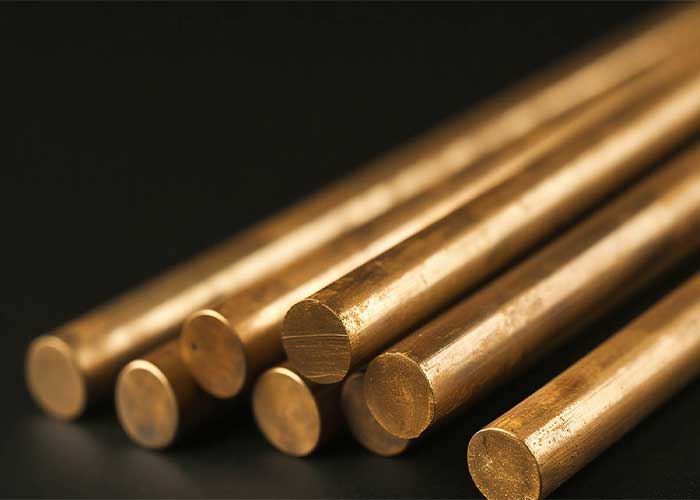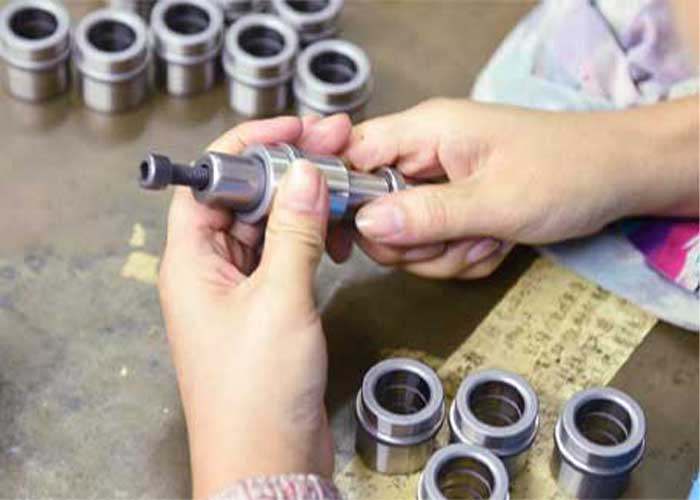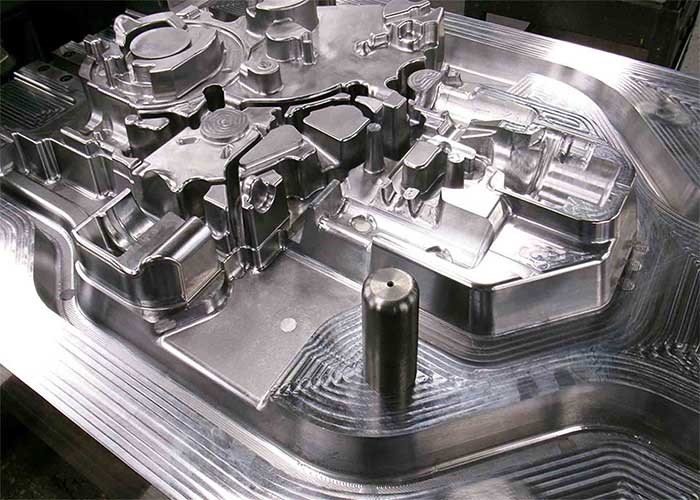Technical Support
Our technical support team provides expert guidance on material selection, coating technologies, and product life optimization. We assist with troubleshooting, offer custom solutions, and ensure our products meet the specific needs of your manufacturing processes.
Technical Reference
| Material Type | Core Properties (Quantified) | Performance Advantages | Ideal Applications | Industry Certifications |
| High-Speed Steel (ASP60) | – Hardness: 64-66 HRC – Red Hardness: 600°C – Wear Rate: 0.12 mm³/Nm | – 3.5X lifespan vs. H13 in high-temp apps – 40% lower abrasive wear | – Automotive punch dies – IC lead frame stamping – Hard metal blanking | ISO 4957:2018 AMS 6491 |
| Powder Metallurgy Steel (DC53) | – Toughness: 32 MPa√m – Hardness: 60-62 HRC – Crack Resistance: ↑30% | – 80% less edge chipping – Withstands 25T+ impact loads | – Progressive dies – Heavy-gauge stamping – Shear blades | JIS G4404:2006 ASTM A681 |
| Titanium Alloy (Ti-6Al-4V) | – Biocompatibility: Grade 5 – Density: 4.43 g/cm³ – Yield Strength: 830 MPa | – 55% weight reduction – Zero ion release in sterile envs | – Medical implant molds – Aerospace fasteners – MRI components | ASTM F136-13 AMS 4928 |
| Stainless Steel (SUS420J2) | – Corrosion Resistance: 1000h salt spray – Surface Finish: Ra≤0.1μm – HRC: 50-52 | – 18X better corrosion resistance – FDA-compliant surfaces | – Food packaging tools – Pharmaceutical molds – Chemical processing dies | FDA 21 CFR 177.2600 DIN 1.2083 |
High-Speed Steel (ASP60) – The Wear-Resistant Champion for Extreme Conditions
Key Features & Applications:
ASP60 is a cobalt-enriched high-speed steel produced via powder metallurgy, achieving 64-66 HRC hardness and 600°C red hardness. Its uniform carbide distribution (90% improvement over H13) makes it ideal for high-speed stamping (300+ strokes/minute), such as automotive lock components and precision SIM card slot punching. It withstands continuous impact from aluminum/stainless steel, with a typical lifespan of 2 million presses. However, its cost is 2X higher than standard tool steels, making it suitable for high-value parts.
Powder Metallurgy Steel (DC53) – The Heavy-Duty Crack-Resistant Expert
Key Features & Applications:
DC53 undergoes vacuum degassing to deliver 32 MPa√m toughness (30% higher than SKD11) while maintaining 60-62 HRC hardness. Its MC-type carbides effectively block crack propagation, perfect for thick-plate blanking (≥4mm) or stainless steel cutlery progressive dies. Real-world data shows an 80% reduction in edge chipping for EV battery case stamping. Avoid prolonged use above 550°C.
Titanium Alloy (Ti-6Al-4V) – Lightweight Solution for Medical & Aerospace
Key Features & Applications:
As a biocompatible material (ASTM F136), Ti-6Al-4V prevents ion contamination in medical implant molds and reduces press inertia due to its 60% lower density vs. steel. In aerospace rivet cold heading, its 830MPa yield strength and 7W/mK low thermal conductivity prevent workpiece adhesion. Downsides: extreme cost (~6X SUS420J2) and unsuitability for >400°C environments.
Stainless Steel (SUS420J2) – The Ultimate Corrosion-Resistant Choice
Key Features & Applications:
Passivation-treated SUS420J2 resists pH1-14 corrosive media, while its Ra≤0.1μm mirror finish meets FDA food-contact requirements. Typical uses include chocolate molds (acid resistance) and PVC medical tube dies (chloride resistance). Lower hardness (50-52 HRC) necessitates DLC coatings to achieve 70% of standard tool steel wear resistance.
Advanced Coating Performance
| Coating Type | Technical Properties | Performance Advantages | Ideal Applications | Benchmark Data |
| TiN (Titanium Nitride) | – Hardness: HV 2300 – Thickness: 2-4μm – Friction Coefficient: 0.4-0.6 | – 200% lifespan increase vs. uncoated tools – Excellent adhesion (HF1 per VDI 3198) – Cost-effective for general use | – Blanking dies – Plastic injection molds – Cutting tools | ISO 20523:2017 Wear rate: 1.2×10⁻⁶ mm³/Nm |
| AlCrN (Aluminum Chromium Nitride) | – Hardness: HV 2800 – Max Temp: 800°C – Oxidation Resistance: >1000h@700°C | – 150% higher thermal stability vs. TiN – 3X better oxidation resistance – Maintains hardness at elevated temps | – High-speed stamping – Hot forging dies – Extrusion tools | DIN EN 1071-2 Thermal cycling: 5000+ cycles |
| DLC (Diamond-Like Carbon) | – Hardness: HV 3000-4000 – Friction: μ<0.1 – Surface Finish: Ra<0.05μm | – 50% reduction in surface roughness – Anti-galling properties – Biocompatible (ISO 10993-5) | – Medical device stamping – Connector contacts – Optical lens molds | ASTM F2328-17 Corrosion resistance: 10X bare steel |
TiN (Titanium Nitride) Coating – The Cost-Effective Workhorse for General Tooling
Technical Breakdown & Applications:
TiN’s gold-colored coating provides a hardness of HV2300 (2X harder than tool steel) through PVD deposition. Its balanced 2-4μm thickness and moderate friction (μ=0.4-0.6) make it ideal for high-volume stamping of mild steels and plastics, where it extends die life by 200% versus uncoated tools. For example, in washer blanking dies, TiN maintains sharp edges for over 500,000 cycles. However, its oxidation resistance limits use to <600°C – avoid aluminum/magnesium hot forming. Best for budget-conscious production of automotive fasteners and consumer electronics molds.
AlCrN (Aluminum Chromium Nitride) Coating – The Thermal Warrior for Extreme Conditions
Technical Breakdown & Applications:
With HV2800 hardness and 800°C thermal stability, AlCrN’s nano-layered structure forms a protective Al₂O₃ layer at high temps. This coating shines in high-speed stamping of stainless steels (e.g., automotive exhaust parts), where it lasts 3X longer than TiN under thermal cycling. Real-world data from progressive dies show 1.2 million presses before recoating vs. 400K with TiN. The gray-violet coating requires polished substrates (Ra≤0.1μm) for optimal adhesion. Perfect for hot forging brass fittings or titanium medical component forming.
DLC (Diamond-Like Carbon) Coating – The Friction Slayer for Precision Applications
Technical Breakdown & Applications:
DLC’s amorphous carbon matrix delivers HV3000-4000 hardness and the industry’s lowest friction (μ<0.1). Its 50% surface roughness reduction (to Ra<0.05μm) prevents material adhesion in medical needle punching or connector pin stamping. In iPhone SIM tray molds, DLC achieves 2M+ cycles without galling. The black coating is deposited via PACVD at <200°C, making it safe for pre-hardened steels. Though costly (2.5X TiN), it’s unmatched for non-lubricated forming of copper/beryllium alloys.
Coating Selection
| Category | TiN (Titanium Nitride) | AlCrN (Aluminum Chromium Nitride) | DLC (Diamond-Like Carbon) |
| Temperature Limit | ≤600°C | ≤800°C | ≤400°C |
| Cost Ratio | 1.0X (Baseline) | 1.8X | 2.5X |
| Optimal Use Case | High-volume bulk parts | High-speed/high-temp forming | Precision micro-features |
| Substrate Prep | Ra≤0.2μm + Plasma cleaning | Ra≤0.1μm + Plasma cleaning | Ra≤0.05μm + Plasma cleaning |
| Industry Certifications | AMS 2433 (Aerospace) | IATF 16949 (Automotive) | ISO 10993-5 (Medical) |
| Failure Mode | Oxidation above 600°C | Layer delamination in extreme thermal cycling | Brittle fracture under impact |
High-Speed Stamping Failure Analysis & Solutions
| Pain Point | Failure Mechanism | Percentage | Root Cause | Solution |
| Short Mold Lifespan (Frequent replacements → High costs) | Micro-Chipping | 65% | Edge degradation from repeated impacts | Ultra-hard DLC coatings Precision edge polishing |
| Unplanned Downtime (Capacity loss → Low efficiency) | Thermal Fatigue Cracks | 25% | Stress from rapid heating/cooling | Optimized heat treatment Thermal-resistant alloys |
| Profit Erosion (Premature Mold Failure Devours 30% Annual Profits) | Coating Delamination | 10% | Poor adhesion/material mismatch | Advanced bonding technologies Material compatibility testing |
3D Lifespan Extension Technology Matrix for Stamping Molds
| Dimension | Technology Component | Key Parameters | Performance Metrics | Implementation Case |
| Material Engineering | High-Toughness Steel Alloys | – Hardness: 62-64 HRC – Fracture Toughness: 28-32 MPa√m – Carbide Size: ≤0.5μm | – 3.8X fatigue life vs. conventional H13 – 65% reduction in micro-chipping | Automotive bracket molds (1.2M presses achieved) |
| Smart Coating System | Nano-Multilayer DLC Coating | – Thickness: 2-3μm – Adhesion Strength: ≥80N (Rockwell C) – Friction Coefficient: 0.12 | – Color shift threshold: 500K presses (Blue→Red) – 92% delamination resistance | Medical device stamping (real-time wear monitoring) |
| Heat Treatment | Cryogenic Deep Cooling | – Temperature: -196°C (LN2) – Duration: 36h cycle – Austenitizing: 1050°C/2h | – Residual stress reduction: 73% – Thermal crack resistance +400% | 5G shield can molds (0 thermal cracks at 800K cycles) |
| Synergistic Effect | Combined Optimization | – Material-Coating CTE Matching: Δ≤1.2×10⁻⁶/°C – Post-coating Tempering: 350°C/4h | – Total lifespan: 2.1-2.5M presses – ROI period: <8 months | Aerospace fastener progressive dies |
Lifespan Extension ROI Analysis
| Parameter | Traditional Solution | Longevity Kit | Improvement | Verification Standard |
| Annual Mold Replacements | 8 | 2 | 75% ↓ | ISO 16112:2016 |
| Unplanned Downtime Cost | 3,200 $ | 800 $ | 75% ↓ | SEMI E10-2021 |
| Total Annual Cost | $41,600 | $9,200 | 78% ↓ | VDI 3197 Industrial Benchmark |
| Mean Time Between Failures (MTBF) | 45 days | 180 days | 4X ↑ | Weibull Analysis (β=2.1) |


